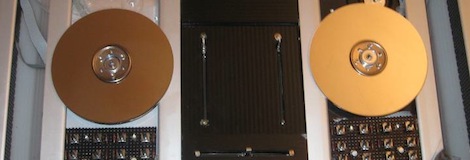[youtube=http://www.youtube.com/watch?v=4pZ70teW678&w=470]
[Autuin] created the most offensive video game ever. Inside a small cocktail arcade cabinet, he installed his own video game that recreates the experiences of the Space Shuttle Challenger and her crew on their last flight.
The build started off by picking up an old cocktail version of Space Zap from The Hackery, a neat little recycling place that turns old computers, monitors, and even old arcade machines into something useful again. After [Autuin] lugged his arcade machine back to his home base at Free Geek Vancouver.
After drooling over the 30-year-old circuitry, [Autuin] disassembled the old machine and installed a mint condition 19″ VGA monitor where an ancient black and white CRT once resided. The control panels replete with their comically large buttons were refurbished and connected to an Arduino and the whole shebang hooked up to a slightly outdated computer.
The real magic happened when [Autuin] coded his game. He created a few sprites from NASA archival footage and made a game where a shuttle takes off and is controllable by each player. As the most offensive video game ever, the space shuttle blows up shortly after launch, declaring ‘game over’ for both players.
[Autuin] will be showing off his new arcade game with a new bezel and cabinet graphics during Vancouver’s Eastside Culture Crawl this November. The game will probably be updated by then; we suggested editing the ‘time to explosion’ to T+73 seconds, but [Autuin] said he’s thinking of ways to make it even more awful.















